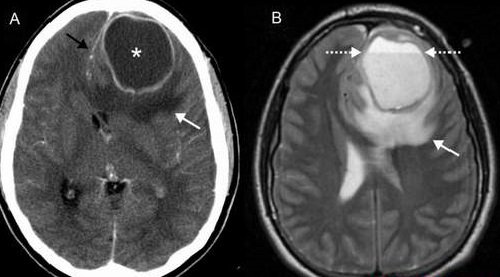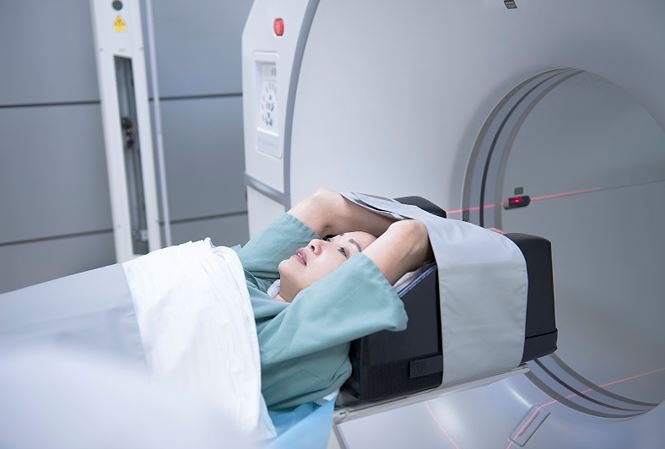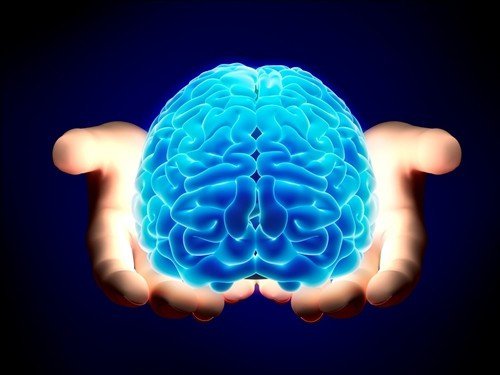The article was consulted professionally by Dr. Le Nghiem Bao – Deputy Head of General Department of General Department of Foreign Affairs, Share99 Da Nang International Health Hub.
Brain ansth intosices is a dangerous disease that anyone can experience. Without timely diagnosis and treatment of brain anesthies, the person may die from rupture of the anesthage or other harmful complications.
1. What is a brain pressure?
Brain anesthage is a condition of purulent formation in brain tissue. Purulent brain affects the entire functioning of the central nervous system, causing a high mortality rate.
The brain is the body that runs every movement of the body. The brain itself is protected by the brain, surrounding layers of tissue and the immune system, however, many bacteria and some organisms can overcome this protective layer, attacking the brain, causing infection. At that time, the brain responds to the penetration of bacteria by forming small empty cavities containing pus, forming brain anesthies.

2. Causes of brain anesthage
The causes of brain anesths are likely to be:
- Lesions of inflammation in the vicinity, facilitating bacteria to attack the brain such as: otitis osteoarthritis, otitis, sinusitis, inflammation of the face or scalp, tooth anesthose or cardiovascular diseases …
- Complications after open traumatic brain injury, brain surgery…
Brain anestheses are a rare disease, but anyone can get it. The highest incidence of brain anesthlem is in people between the ages of 30 and 45 years.
Factors that increase the risk of brain anesthlex include:
- Head injuries
- Infection in the area near the head such as: ears, nose, nose, face
- Have diabetes or chronic diseases
- Congenital heart disease
- Meningitis
- Patients abusing drugs
- Patients with weakened or weakened immune systems such as cancer sufferer, seriously ill person, HIV AIDS sufferer …
3. Signs of brain anesthpression
Signs of brain anesthies in each case vary depending on the degree, serious condition of the disease. In some cases brain anesthies are progressing slowly, some cases of the disease progress very quickly, causing severe brain damage. Usually, brain anesths include the following 3 main signs:
- Infection syndrome: the person shows signs of high fever from 39 – 40 degrees Celsius. High fever appears when the anesthetic is at the pervasive stage. When the person has a temporary inpatient, there is less fever. In addition, patients also have feelings of fatigue, loss of appetite, dry lips, dirty tongue, rapid weight loss
- Inpatient hypertension syndrome: smoldering headache, pain that spreads throughout the head especially in the local area of the anesthial. Headaches increase at night or when the person changes their position. Accompanied by a feeling of nausea, vomiting, vomiting.
- The longer the disease lasts, the more intranial pressure increases, the more vomiting the person, unsym control vomiting, visual edema, sluggish spirit, confusion, dismay, difficulty communicating, convulsions, even coma …
- Khuent neurological syndrome:
- If the loaf is on one side of the hemisphere, the person will be paralyzed by half a person
- If the anesthral loaf is on either side of the hemisphere, the person will have quadriplegic paralysis
- Cranial nerve palsy
- Have local seizures

4. Treatment of brain anesths
The diagnosis of brain anesthies is based on the signs of brain anesthies that the person encounters and the results of a CT scan or mri resonance imaging of the brain.
The course of treatment of brain anesthies depends on the location of the resident loaf, the size and number of the anesthies as well as the health development of the patient. Depending on the case, medical treatment is applied merely or combined with medical treatment, treatment of the cause of the disease.
- Mere medical treatment consists of the use of antibiotics with high diffusion capacity, which crosses the barrier of brain protection. Patients will take high-dose antibiotics for long periods of time, depending on the results of antibiotics. Take antibiotics as injections and switch to oral form.
- During treatment, patients should be monitored continuously, CT scans or MRI resonance imaging in the brain every 3-4 days to check the course of the disease until clinical symptoms improve.
- If the use of antibiotics has not yet been effectively treated, the patient will be combined with surgical treatment by surgery, suction of the anesthial, conduction and complete removal of the anesthial. If the loaf is in a deep position, it is recommended to proceed to the suction. If the loaf is in a shallow position, larger than 3cm in size and has only 1 drive, surgical surgery can be applied.
- For cases of brain aneumatoids caused by complications from surgery or conditions such as otitis, sinusitis, tooth anesthiesis … patients should be combined with treatment of these conditions to destroy the root causes of the disease
- Treatment of brain anesths in combination with rest, having a proper diet …
When there are signs of brain aneths, especially when the person is in the group of people at high risk of the disease, it is necessary to go to the doctor as soon as possible. Timely treatment of brain anesthies can reduce the risk of later complications, reducing mortality.
- The hospital is fully equipped with modern medical machines and equipment, imaging facilities to support the most advanced diagnosis and treatment such as: G.E 3.0 CHT (MRI) scanner, Toshiba 640 slices CT SCAN, cerebral an anethography, MRA and CTA … for clear image quality, easy diagnosis and treatment of brain and spinal diseases of both medical and gynecologic diseases (brain tumors, brain degeneration, white chemical degeneration, congenital diseases of brain structure, traumatic braininjury, spinal injuries,vascular diseases: aneurysms and cerebral vascular malformations …)
- Being examined and treated by a team of skilled and experienced doctors, especially Specialist 2 Le Nghiem Bao – Deputy Head of General Surgery Department, Share99 Da Nang International Health Hub.
- Patients are treated and restored in modern and fully equipped rooms of international standards, helping patients feel comfortable, supporting the treatment process to the maximum.
For direct advice, please dial 02363711111 or register online HERE. In addition, you can register for remote consultation HERE
- A lot of hair loss: When is the disease?
- Why do you lose a lot of hair?
- Hair loss in women: What to know

